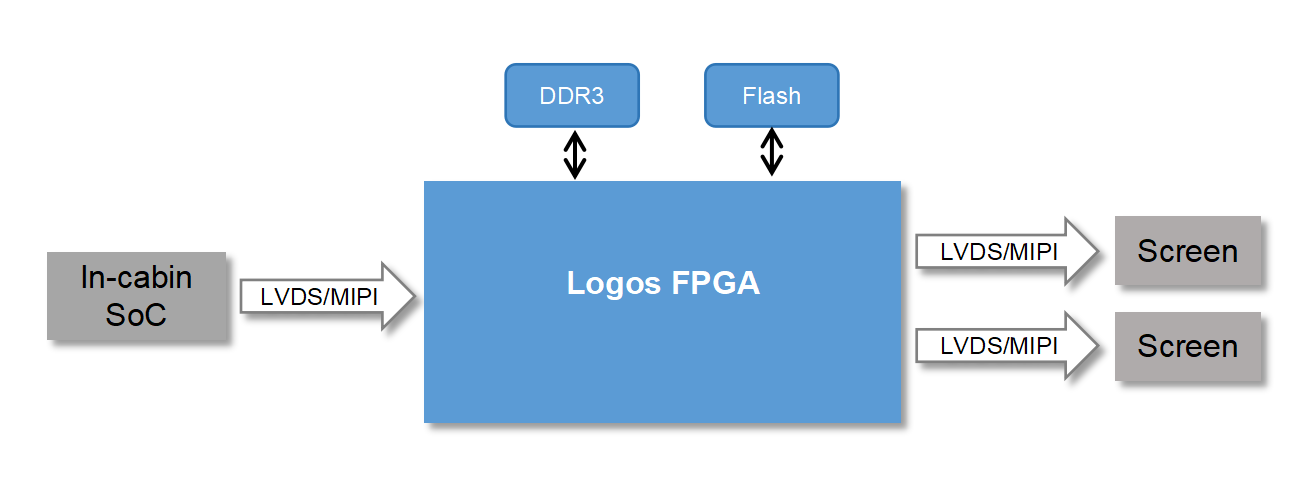
Auto
With the rapid development of the automotive industry towards electrification, automation and intelligence, the automotive industry is facing unprecedented challenges and opportunities, requiring higher performance processors, more advanced sensors and more efficient controllers to empower and facilitate the development and manufacturing of the new generation of vehicles.As a core high-end device, FPGA will play an important role in this.
Application examples
-
In-cabin displaysIn-cabin displays are currently one of the main application scenarios for automotive FPGAs in China, which includes components such as digital dashboards, central control screens and entertainment screens.Currently, the number of displays in a vehicle's cabin is only growing, and smart in-cabin SoC chips often do not have enough video interface to support multiple screens. Here, FPGA chips can achieve video interface conversion and expansion functions.
-
Camera monitor systemsA camera monitor system (CMS) is a combination of camera and display-based products, which enhances the driver's visual perception of the vehicle's surroundings to the side and rear, further enhancing driving safety and comfort.Advantages such as a large field of vision, few blind spots, little impact from the weather and reduced drag make them ideal for new energy vehicles.FPGAs have natural advantages in low latency, image processing, etc. and dominate current CMS applications.

- Products Titan Family Logos Family Compa Family Pango Design Suite
- Solutions Communication Industrial Image&Video Consumer Auto Data center Other
- Resource Software and license IP Partners
- About us Company profile Contact us Announcement
-
Contact us
86-755-66886188
marketing@pangomicro.com
No. 15, Gaoxin South Road,
High-Tech Industrial Park,
Nanshan District, Shenzhen
 Official public account
Official public account

©2023 All Rights Reserved Shenzhen Pango Microsystems Co., Ltd. Guangdong ICP Filing No. 14029535




